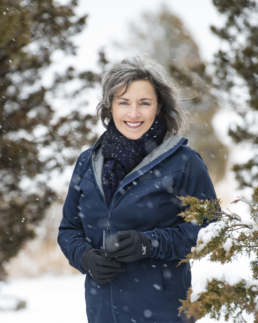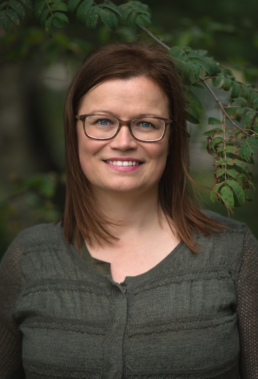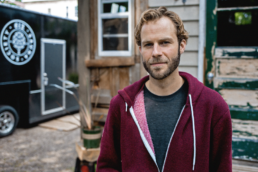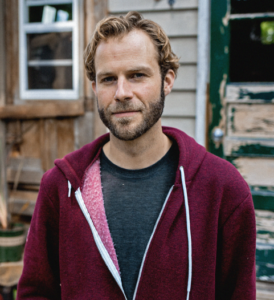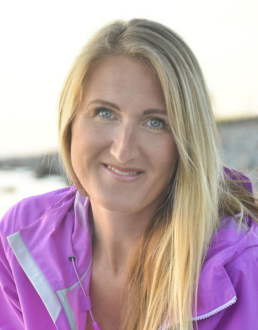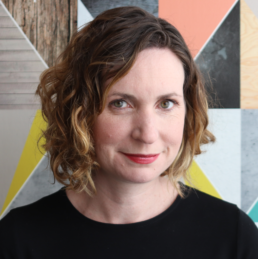Kirsten Snow - Blue Stone Journeys
Forest Bathing: Reconnecting with Ourselves and the Natural World
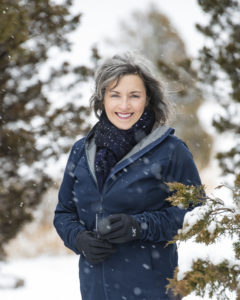 Who: Kirsten Snow is a certified nature and forest therapy guide and a founder of Blue Stone Journeys. Kirsten leads private and public walks for groups throughout New England and will be partnering with Live Nordic on an upcoming walk in March 2020
Who: Kirsten Snow is a certified nature and forest therapy guide and a founder of Blue Stone Journeys. Kirsten leads private and public walks for groups throughout New England and will be partnering with Live Nordic on an upcoming walk in March 2020
Current Gig: Certified Nature and Forest Therapy Guide and Founder of Blue Stone Journeys
Location: How fortunate for me - outdoors - all over the world. And if participants aren’t able to join me outdoors, I can bring nature to them!
Favorite way to relax: It’s actually pretty simple, I love sitting on my deck, listening to music watching the marsh change as the water and sky move or if I want to be a bit more active; taking a walk on the beach, in the forest, snowshoeing in the fields. Creating art and cooking also get me to that place of serenity.
LN: What inspired you to become a nature and forest therapy guide?
KS: There sure is a personal story! Believe it or not, I was pretty close to purchasing a women’s
European clothing store, when I got “the call” from Mother Nature. I’d first heard of forest bathing
several years ago at a retreat I attended and then for a couple of years, the subject kept “popping up” in
magazines I was reading or on NPR. The morning after the 2016 election, I knew the world as we knew
it was going to get a bit crazy, and I knew I’d need to use all the tools in my toolbox to stay centered.
There was a little voice in my head that told me I should share some of these tools. I did not know what
that meant, until a year later, when I experienced forest bathing for the first time. As I laid down on a
lush green mound of moss, I was brought back to my childhood and a place that was special to me. It
was at that moment that I knew how I could help others … and help the planet at the same time.
"It was at that moment that I knew how I could help others… and help the planet at the same time."
LN: How can the modern-day lifestyle benefit from nature and forest therapy?
KS: We live in a world that moves at record speed, we spend less time outdoors, and more on our
devices. Loneliness, anxiety, and stress are all at record levels. We have lost our connection to nature
and the way it grounds us. Many see nature as “something else”, rather than realizing we are all
connected. Being in nature brings us back to what is authentic, that which is real – helping us to re-
connect with ourselves and the natural world.
"Many see nature as 'something else', rather than realizing we are all connected. Being in nature brings us back to what is authentic, that which is real."
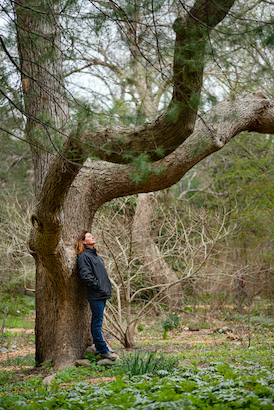
LN: What are the most significant and scientifically proven health benefits of forest bathing?
KS: Studies done around the world have proven that spending time in nature is good for our health and
well-being. The Japanese have studied the benefits of phytoncides, a chemical the trees produce –
lowering our blood pressure, reducing our heart rate, and increasing production of NK cells which help
fight cancer.
"The Japanese have studied the benefits of phytoncides, a chemical the trees produce – lowering our blood pressure, reducing our heart rate, and increasing production of NK cells which help fight cancer."
Jonna Huomo - Mindstone Forest Therapy
Wellness from the Woods
Who: Jonna Huomo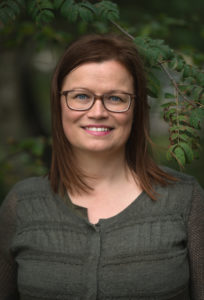
Current Gig: Forest Health Coach, Entrepreneur, Public health nurse, Mindfulness Instructor
Location: Helsinki, Finland
Favorite way to relax: Reading, listening to music, walking in the forest and meditating
LN: What inspired you to become a Forest Health coach? Is there a personal story behind it?
JH: I was working as a public health nurse, helping companies and individuals stay healthy, but I always felt that there should be a more comprehensive way to help people. When individuals are faced with stress, particularly in this age of information overload, we remind them to eat well, exercise, and get enough sleep. While these are sensible suggestions, I have always felt that we could do more to help people.
When my daughter got sick, I had to leave my job to be more available to her, so I decided to start my own business. This gave me an opportunity to start helping people and organizations in ways that I found effective, and I got to put my ideas into practice. I started adding some new elements to my work: mindfulness and forest health. Taking people into nature and having them work on mindfulness there makes for a perfect mix. Combined, these two practices work as an “effective medicine”, and my patients are able to develop awareness, balance, recovery and restoration.
"Taking people into nature and having them work on mindfulness there makes for a perfect mix."
I am very happy, and I love my job. It is amazing to see how people are starting to feel more balanced and focused again. Some feel that through these practices, they are getting their life back, which makes my work very rewarding. My work schedule also allows me to be available to most important people in my life (my daughter has type 1 diabetes, so it’s important for me to be available to her). My work schedule also gives me time to do voluntary work; I know how stressful life can be with chronic diseases, so I volunteer with families of those with type 1 diabetes to help in any way I can.
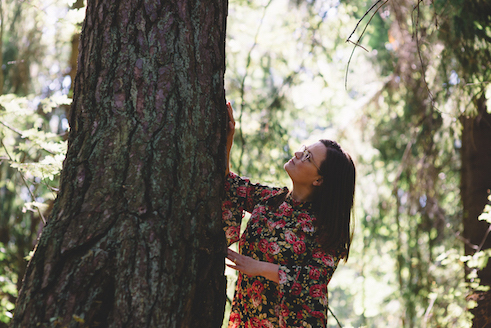
LN: Nordic people share a unique connection with the forest. What expertise or knowledge can Nordic lifestyle bring into Forest Therapy, if any?
JH: Nordic people have always felt connected to nature and have learned to live in harmony with it. Our forests were there for us during wars and poverty- feeding us, sheltering us, comforting us, and offering us medicine. This ancient knowledge is still available to us and to anyone who is interested in learning about it. For those of us who choose to learn, it is then our duty to understand the relevance of this knowledge in modern times and share it with the rest of the world.
"Our forests were there for us during wars and poverty- feeding us, sheltering us, comforting us, and offering us medicine. It is our duty to understand the relevance of this knowledge in modern times."
Nordic cultural traditions also factor into why the Nordic people have a unique connection with the forest. For example, children often play in the forests, and adults and children alike enjoy spending time picking berries and mushrooms, hiking and camping. These are wonderful, natural ways to enjoy nature and I think it’s imperative to keep telling stories of these activities to inspire others to do the same.
"Research institutions in Finland are continuously working on discovering new ways we can benefit from natural substances."
Additionally, it is important for us to tell the world about the amazing Nordic research findings about the health benefits of nature. Research institutions in Finland are continuously working on discovering new ways we can benefit from natural substances. For example, there are many studies focusing on the compounds in trees, and exploring their capabilities to cure diseases or aid other health conditions. I am hopeful that these findings will help us respect nature even more. After all, our relationship with nature comes intuitively- humankind won’t survive if we destroy it. I also think that by encouraging people to spend more time in nature, it will bring us closer to greater humanity, peace and balance.
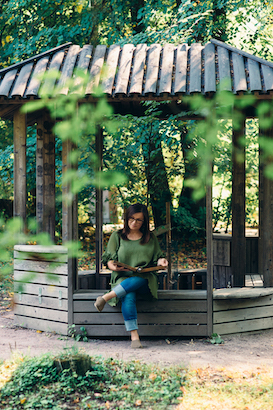
"..by encouraging people to spend more time in nature, it will bring us closer to greater humanity, peace and balance."
LN: Today, we see Forest Therapy or Forest bathing developing in many countries, in many forms. Amos Clifford concludes in his book, Your Guide to Forest Bathing, that the earth is calling us back into the forest. Why do you think Forest Therapy or Forest Bathing is emerging in these times?
In today’s world, we deal with increased levels of stress and are constantly overloaded with information. Modern technology can be very helpful, but it needs to be balanced with time away from technology- otherwise, we get overstimulated and tense. We have become unaccustomed to actually listening to our bodies and experiencing stillness, and we need to slow down to keep ourselves physically and mentally healthy.
"We have become unaccustomed to actually listening to our bodies and experiencing stillness, and we need to slow down to keep ourselves physically and mentally healthy."
Nature offers us grounding and relaxing elements and experiences. For example, even just being surrounded by trees allows us to breathe clean air, which in turn massively benefits our health and well-being. Walking in nature allows us to get exercise while being surrounded and amazed by the beauty of nature.
"Nature offers us grounding and relaxing elements and experiences."
Nature, for me, is like another home- you can go to the forest at any moment, no matter what else is happening in your life, and you’re always welcome. It doesn’t matter how you look or feel. It doesn’t matter if you’re upset or have a lot on your mind. Nature is always welcoming.
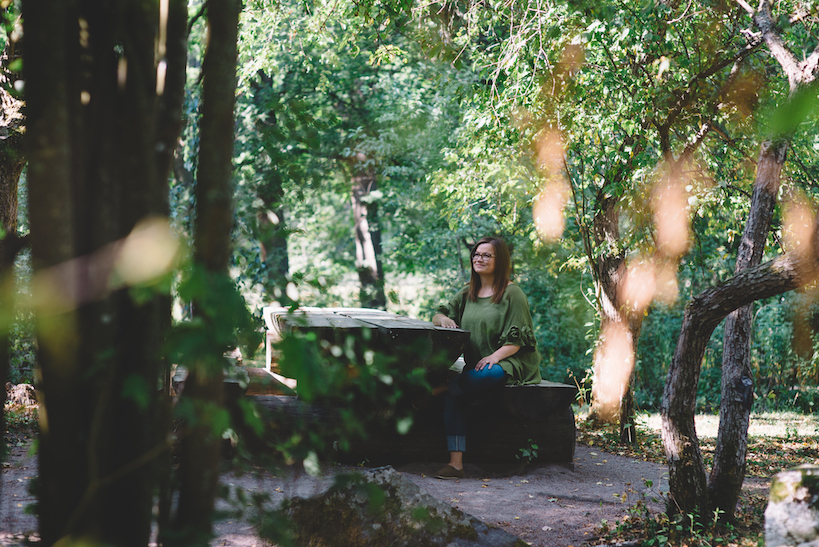
LN: What practical advice can you offer to someone who would like to start practicing Forest Bathing (where to start and how to make it a part of your daily life)?
Find a nice and easy place for you to visit- whether it be a park or a guided path in a forest- that’s removed from the sounds of city life. Make sure to wear comfortable clothes and shoes, and feel free to take a friend if you feel that will be helpful. Use all your senses: listen to the birds, feel the sun and wind on your skin, see the trees and smell the flowers. After you’ve spent some time observing nature as it occurs naturally, start focusing on yourself and your sensations. Listen to your breathing and start to notice any sensations in your body. Acknowledge what is going on inside of you.
"After you’ve spent some time observing nature as it occurs naturally, start focusing on yourself and your sensations."
It’s beneficial to practice forest bathing every day, but if it’s not possible for you to make it outside every day, a good and healthy alternative is to look at nature pictures and watch videos. I want forest bathing to be accessible, which is why I co-created the Walk in Finland- application. This is a virtual nature walk application (available in the App Store and Google Play Store) that lets you listen to the sounds of nature if it isn’t feasible for you to make it outside each day. It’s a great way to spend your office break, too!
"I want forest bathing to be accessible, which is why I co-created the Walk in Finland- application."
I wish your journey with forest bathing to be relaxing, refreshing and full of magical moments in nature. And I hope you discover how good it makes you feel.
John Pederson - the 612 Sauna Society Cooperative
Sauna Cooperative Bringing Steam Bathing to Urban America
Who: John Pederson
Current Gig: Founder of the 612 Sauna Society Cooperative and Sauna Society Outfitters
Location: Minneapolis Minnesota USA
Favorite way to relax: Ahhhhh, in the SAUNA of course!
“Since the dawn of humanity, humans around the world have gathered to enjoy the simple pleasures of steam and heat. The sweat bathing traditions of the world have been preserved by their responsiveness to the needs of modern societies”, explains John Pederson, the Founder of the 612 Sauna Society and Sauna Society Outfitters, both organizations sprouting from the Twin cities area. Founded in 2016, the 612 Sauna Society is the nation’s first member owned Sauna Cooperative and the Sauna Society Outfitters was established two years later, to offer the experience of steam bathing through trainings, events and product development.
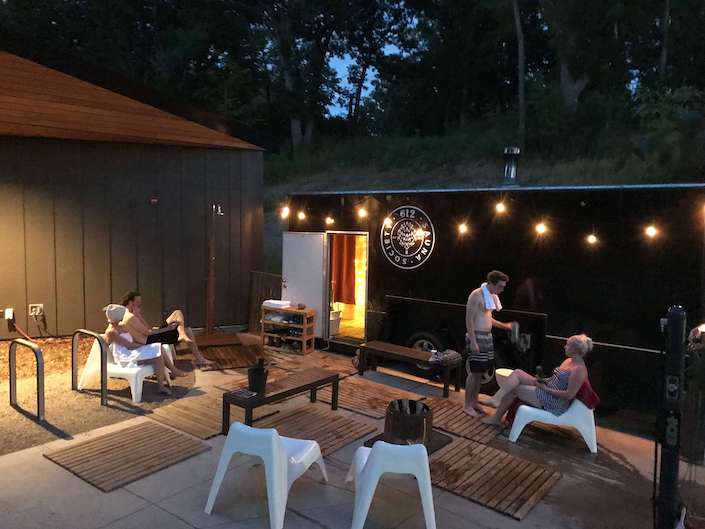
“…in today’s fast-paced, distracted, divided and noisy world — the therapeutic potential of steam bathing has never been more obvious or more needed.”
John Pederson could be called a pioneer in making Sauna relevant and “cool” in urban America. Since building his first Sauna in 2014, John has hosted over 5,000 guests for sauna gatherings at venues he has created or managed throughout the Twin Cities. Today the 612 Sauna Society has over 150 members, and it owns and operates a mobile sauna unit called the Forge. The Forge has been hosted by dozens of businesses and neighborhood organizations in the Minneapolis area.
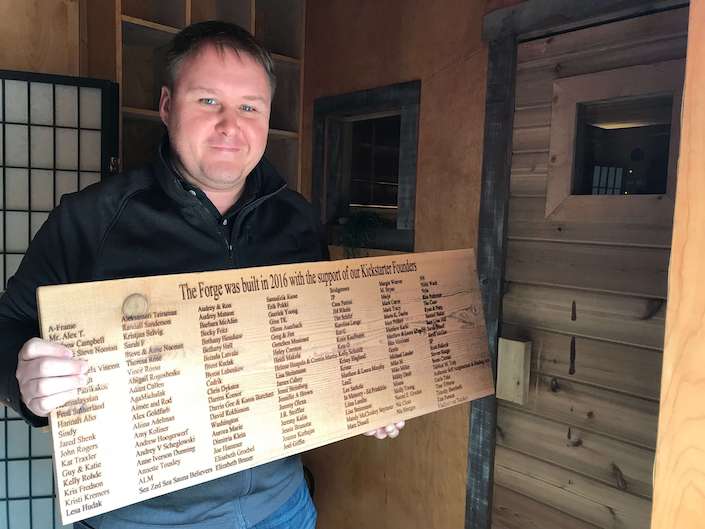
In addition to his gig as a Chief Fire Wood Officer at the 612 Sauna Society, John’s other venture, the Sauna Society Outfitters, now organizes guided steam sessions at Hewing Hotel in downtown Minneapolis, followed by a cool down relaxation round and an optional ice bath reset.
We hope that what John has created is just a beginning for a movement to make Sauna a bigger part of urban life in America. As people search new ways to manage anxiety and stress caused by the demands modern society, sauna can improve mental and physical wellness, in addition to the social benefits it generates.
It’s been inspiring to follow John’s journey of making sauna tradition more relevant in North America, particularly for younger generations. We chatted with John about the future of sauna in America and its role in our everyday life.

LN: We think of Sauna as something so inherently Nordic. What does Sauna represent to you?
JP: I think of sauna as one of many Sweat Bathing traditions. Since the dawn of humanity humans around the world have gathered to enjoy the simple pleasures of steam and heat. The sweat bathing traditions of the world have been preserved by their responsiveness to the needs of modern societies. The Finns started calling it Sauna, the Turks Hammam, the Native Americans Sweat Lodge, and the Russians Banya. Each culture developed different customs and practices around the experience to best serve their time, place and communities.
LN: Why has the 612 Sauna Society Cooperative become so popular among the local communities in Minnesota?
JP: Today, the therapeutic potential of steam bathing has never been more obvious or more needed. As a 308B cooperative organization, our Board of Directors is voted in by our Membership on a one-to-one basis (each member has one share and each share gets one vote). The purpose and advantage of this governance is to keep our organization responsive to the needs and priorities of its Member-Owners. In doing so, we are discovering the therapeutic potential of sauna today and actively participating in the preservation of one of the finest traditions of The North.
“I would love to see more innovated projects making the physical, mental and social benefits of steam bathing traditions more available to all.”
LN: Is there anything about Sauna that you consider to be a unique kind of experience that you cannot find elsewhere?
JP: It’s a very unique experience, especially in today’s fast-paced, distracted, divided and noisy world. In these times, the therapeutic potential of steam bathing has never been more obvious or more needed.
LN: How would you like to see the culture and traditions of sauna evolving in America in a few years’ time?
JP: I would love to see more innovated projects making the physical, mental and social benefits of steam bathing traditions more available to all. I would love to see more Sauna Co-ops.
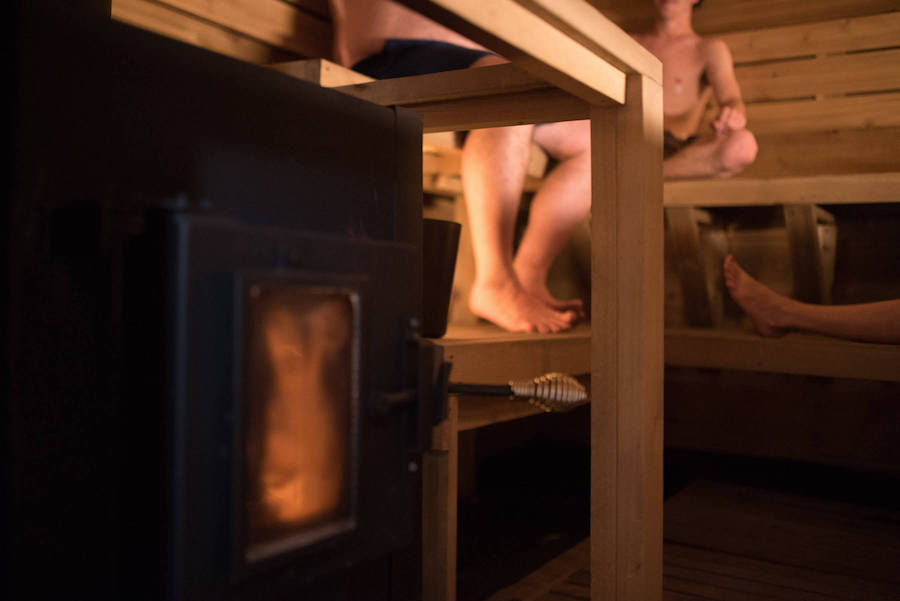
Linda Åkeson McGurk - Rain or Shine Mamma
Muddy, Happy, Healthy
Who: Linda Åkeson McGurk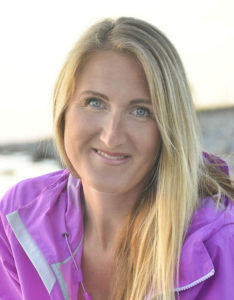
Current Gig: Journalist, blogger, author and advocate for all-weather play
Location: Splits time between Sweden and Indiana
Favorite way to relax: Walking in the forest
One of the fundamental parts of living Nordic is spending a great deal of time outdoors and connecting with nature. In the North, where winters are long and summers short, people have learned to embrace each season and children are encouraged to play outside in any weather, all year round.
We had an inspiring chat with Linda Åkeson McGurk, a Swedish American journalist, blogger, and author of the parenting memoir There’s No Such Thing As Bad Weather: A Scandinavian Mom’s Secrets for Raising Healthy, Resilient, and Confident Kids (from Friluftsliv to Hygge), about the benefits of all-weather play.
Linda is a fierce advocate for the Nordic outdoor tradition and believes that the best childhood memories are created outside, while jumping in puddles, digging in dirt, catching bugs and climbing trees. In 2013, she started the blog Rain or Shine Mamma to chronicle the adventures of her own two wildlings and to inspire other parents and caregivers to get outside with their children every day, regardless of the weather.
Linda shares her best tips on how to adopt the principles of an outdoor lifestyle – what the Scandinavians call friluftsliv - at home regardless of where you live.
LN: “There's no such thing as bad weather, only bad clothes", exemplifies the Nordic understanding about the value of spending time outdoors, regardless of the weather. What do you think the tipping point will be for a more widespread understanding of the value of all weather play for children?
LM: I think there’s a lot of momentum for the movement to get kids back outside right now, so these are exciting times for sure. Just ten years ago, when I had my first daughter, “forest school” – a preschool where kids spend most or all of the day learning outside, all year round – was an unknown concept in the US. It’s still not exactly a household term, but the number of forest schools have grown from just one in 2006 to several hundred today.
Even though far from everyone has the opportunity to enroll their child in a forest school at this point, I think the growth of this type of early childhood education will go a long way toward normalizing all-weather play for children. When people see these happy, healthy, muddy forest school kids playing in nature, I think they realize on a very intuitive level that this is what young kids should be doing, not spend their days sitting at desks and filling out worksheets. And for the skeptics, there’s fortunately a lot of research being published about the benefits of outdoor play that backs up the notion that being outside every day, rain or shine, is good for kids.
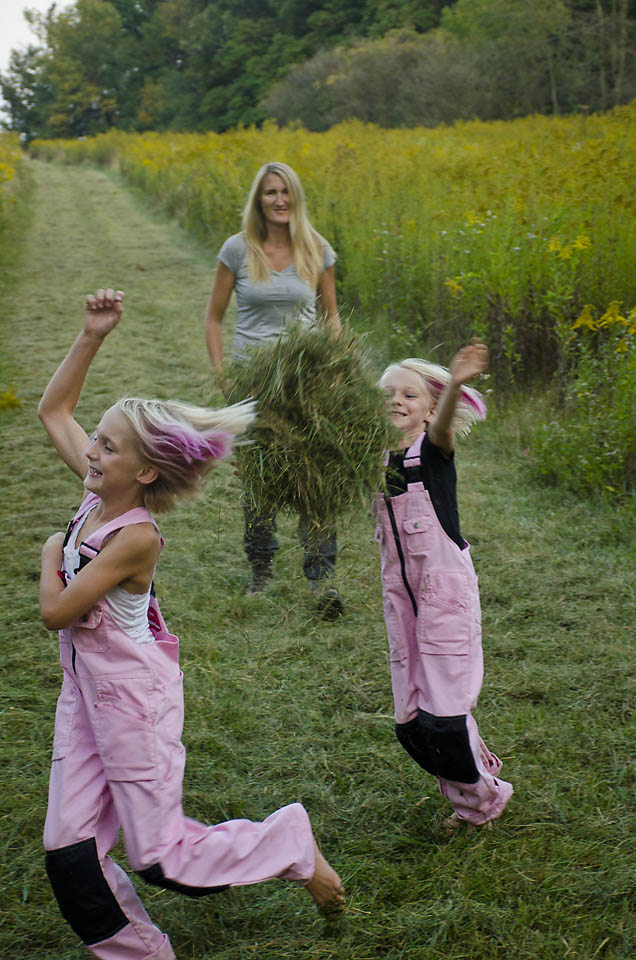
"Being outside every day, rain or shine, is good for kids."
LN: What role, if any, do you see the rise of technology playing in advancing our understanding of the value of outdoor play? Have you seen any apps or technology that promote outdoor play?
LM: I think technology gives us many wonderful tools to promote and learn more about outdoor play – just look at all the grassroots outdoor organizations that are connecting and inspiring parents online today. Most of them wouldn’t even exist if it weren’t for the internet and social media. Having said that, I also think excessive technology use among kids is one of the biggest and most common challenges for parents today, and we know that there’s a gross imbalance between time spent in front of screens and time spent playing outside.
"Even very young kids now use electronic media frequently. -- I think that makes it harder for them to appreciate the slow entertainment offered by nature."
Even very young kids now use electronic media frequently and get hooked on instant gratification and constantly being entertained, and I think that makes it harder for them to appreciate the “slow entertainment” offered by nature. I’ve seen many kids even lose their sense of wonder. That’s just one of the reasons why I lean toward delaying screen time for younger children and restricting it for the older ones.
I know there are apps that are meant to entice kids to go outside and explore, but the issue that I’ve run into when I’ve tried a few of them, is that the kids become more interested in the screen than what’s going on around them. When that happens, the screen becomes a barrier to rather than a facilitator of nature connection. But to each their own, and for kids who are not used to playing in nature, a mobile app may bridge the gap.
"I think there’s a lot of momentum for the movement to get kids back outside right now, so these are exciting times for sure."
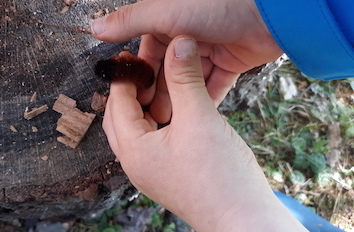
LN: Nordic societies provide infrastructure that encourages children’s independence at young age and all-weather play is a norm at schools and daycare centers. What practical advice can you give to parents who want to follow the Nordic philosophy of giving children more freedom to play outside on their own and take risks, but find it challenging due to limited access to green areas, a lack of safe bike/walking routes to school or a wide variety of other reasons?
LM: Parents in the Nordic countries are very lucky insofar that outdoor play is supported on so many levels of society, but I think it’s possible to adopt the principles of an outdoor lifestyle – what the Scandinavians call friluftsliv - at home regardless of where you live. The key is in committing to getting outdoors daily, to make it part of your family rhythm. If you have a backyard, great! That’s an entire world of wonder for little kids and a great place for them to start exploring. And by all means, invite the neighbors’ kids!
"Children need risk in order to grow."
I think one of the reasons people are afraid to let their kids out today is a lack of social trust and you can help fix that by getting to know the people in your community. Even if you don’t have a backyard, get outside in your neighborhood and come back to the same places often, to give your child a chance to develop a sense of place. Challenge yourself to gradually give your child more and more freedom to take risks and explore without supervision.
Unfortunately, we live in a culture of fear – fear that our kids will get abducted, hurt themselves, fall behind at school, and all these fears are taking a toll on outdoor play. Some fears are more justified than others, but that doesn’t change the fact that children need risk in order to grow. Some of the biggest health challenges facing children right now are obesity, diabetes, ADHD, anxiety and depression. Outdoor play can help prevent and reduce the symptoms of all of those, so the biggest risk of all may very well be sitting on the couch.
But even though creating a culture of friluftsliv starts at home, it shouldn’t end there. For those who live in places where green-spaces, sidewalks and bike routes are scarce, get involved in your community and advocate for a change. There are no quick fixes, but you’ve got to start somewhere and there are many inspirational examples out there of communities where small changes have made a big difference.
“...obesity, diabetes, ADHD, anxiety and depression. Outdoor play can help prevent and reduce the symptoms of all of those.”
LN: What are you working on now?
LM: My book There’s No Such Thing as Bad Weather was just published in Poland, so I’m anticipating some media appearances there in the near future. Publishers in Turkey and Vietnam have bought the rights for it as well, so that’s coming up next. Meanwhile in the US, the paperback version of the book is coming out at the start of October. It’s so exciting to see the message of the book spread to different countries and to see progress, even if it’s slow at times. I also have several events planned in Chicago, New Jersey and New York City at the end of October. (Check out my Facebook page Rain or Shine Mamma for details.) My plan is to keep inspiring, educating and advocating through public speaking, my blog and social media – it’s my calling.
“The key is in committing to getting outdoors daily, to make it part of your family rhythm.”

Linda is touring the US in October
Linda has several events planned in Chicago, New Jersey and New York at the end of October. Check out her Facebook page Rain or Shine Mamma for details.
Go To Linda's Facebook Page https://www.facebook.com/rainorshinemamma/
Mette Aamodt - Aamodt/ Plumb Architects
Nordic Architecture
Who: Mette Aamodt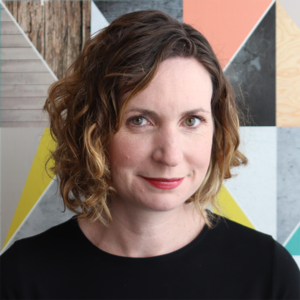
Current Gig: Architect, Design Activist, Co-Founder of the Slow Space Movement, Blogger
Location: Cambridge Massachusetts USA
Your favorite way to relax: By the ocean, listening to the waves and looking out over the water.
In a world of constant distractions, people seek new ways to take care of themselves, disconnect and recharge. We chatted with Mette Aamodt, the Co-Founder and CEO of Aamodt/Plumb Architects about how Nordic values and architecture can help us slow down and play a role in our well-being.
In addition to being a business owner, Mette is also a Design Activist, Co-Founder of the Slow Space Movement and Blogger at slowspace.org. Born in Norway, she is deeply influenced by her Nordic heritage and has a passion for modern design. In her work she focuses on simple forms and natural materials that are well-crafted and long-lasting.
LN: In both your blog, Slow Space, and your built projects you put a lot of emphasis on understanding and implementing Nordic Values towards achieving a better well-being for your readers and clients. How about your personal life? How have you been able to embrace Nordic values to improve your quality of life?
MA: In our personal and family life we try to live a Nordic lifestyle as much as possible. For us that means lots of family meals, spending time outside every day and enjoying each day as it comes. We also resist the very American trend of over-scheduling our kids and ourselves. We love having weekends with absolutely no plans, so we can do whatever the mood suggests.
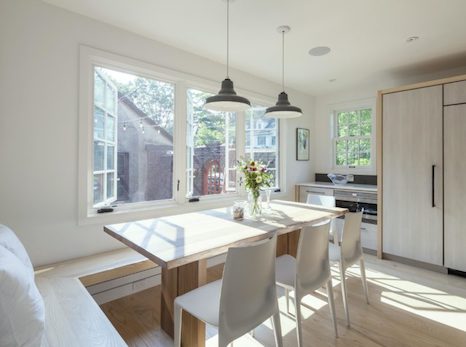
"Creativity and imagination need time and uncluttered space to emerge."
LN: Later, we will be speaking with Linda McGurk, the author of ‘There’s no Such Thing as Bad Weather’, about the benefits of outdoor play and nature-centric parenting. In your opinion, how can architecture stimulate our senses in a similar way that nature does and to what benefit?
MA: I completely agree with nature-centric parenting and another way to do that is to bring nature inside with natural light and natural materials like wood and stone. Natural light and materials make us feel connected to our world and sooth our overstimulated minds and bodies.
LN: How can Nordic architecture help to slow down our busy lives and inspire us to dream and be more imaginative?
MA: Nordic architecture's focus on simple forms and natural materials is calm and soothing. Nordic architecture is fundamentally focused on the human experience. It is very welcoming and encourages us to stay and enjoy the atmosphere for a while. Creativity and imagination need time and uncluttered space to emerge.

